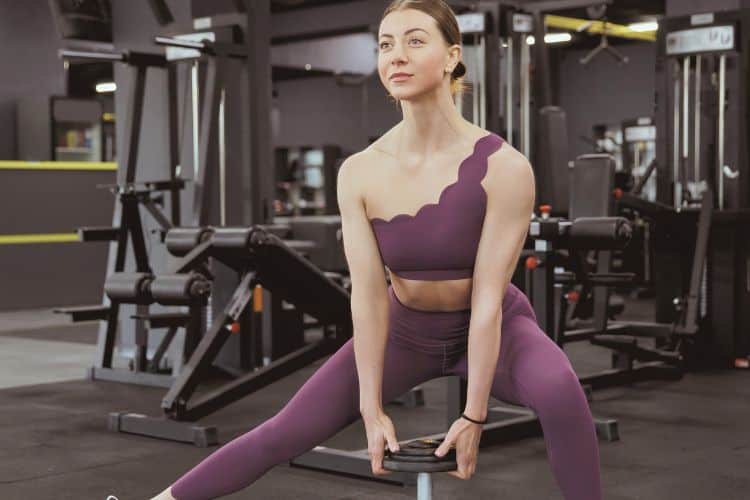Sign up for workout ideas, training advice, reviews of the latest gear and more.






High-Intensity Interval Training (HIIT) has become one of the most popular workout methods for women looking to burn fat, build strength, and save time. Whether you’re a busy mom, a working professional, or someone starting a fitness journey, HIIT workouts can transform your health and fitness level — all without spending hours in the gym.
This guide breaks down everything you need to know about HIIT: what it is, how it works, the benefits, how to start safely, and sample workouts designed specifically for women.
HIIT stands for High-Intensity Interval Training — a workout strategy that alternates between short bursts of intense exercise and brief periods of rest or lower-intensity activity.
Unlike steady-state cardio (like jogging at the same pace for 30 minutes), HIIT pushes your heart rate close to its maximum during the “work” intervals, then allows recovery before repeating the cycle.
For example, a simple HIIT session could include:
The key to HIIT is intensity — working hard enough during the active phase to challenge your body while maintaining proper form.
During a HIIT workout, your body alternates between anaerobic (high-intensity) and aerobic (recovery) states.
This cycle elevates your metabolism and heart rate, triggering a powerful afterburn effect — also known as Excess Post-Exercise Oxygen Consumption (EPOC). That means your body continues burning calories for hours after you finish your workout.
One of the biggest advantages of HIIT is efficiency. Research shows that a 20-minute HIIT workout can burn as many calories as an hour of traditional cardio.
This makes it ideal for women with busy schedules — you can get a complete workout during a lunch break or early morning routine.
HIIT increases your resting metabolic rate, meaning you burn more calories even at rest. The afterburn effect helps reduce body fat, especially around the abdomen, making it effective for women seeking weight loss and toning.
Because HIIT often combines strength and cardio movements (like squats, lunges, push-ups, and burpees), it helps build lean muscle while burning fat. This gives your body a strong, sculpted, and feminine shape.
High-intensity intervals challenge your cardiovascular system, improving your VO₂ max — the measure of how efficiently your body uses oxygen. Over time, this leads to a stronger heart and better endurance.
Many HIIT workouts use just your bodyweight. You can train anywhere — at home, in the park, or while traveling — without needing gym access or fancy machines.
The endorphin rush from HIIT can elevate your mood, reduce stress, and fight fatigue. Regular training also improves sleep quality and mental focus.
HIIT isn’t one-size-fits-all. There are many ways to structure your sessions depending on your goals.
Perfect for beginners and home workouts, this version uses moves like jumping jacks, squats, push-ups, and mountain climbers.
Example:
Add dumbbells, kettlebells, or resistance bands to increase resistance and build muscle.
Example:
A popular HIIT format — 20 seconds of max effort followed by 10 seconds of rest, repeated 8 times (4 minutes per round).
Example:
You can combine multiple Tabata rounds targeting different muscle groups.
Focuses on exercises that elevate your heart rate — sprinting, jump rope, cycling, or rowing.
Example:
Combines strength training with short rests to build muscle endurance.
Example:
A balanced HIIT workout includes a warm-up, working sets, and a cool-down.
Prepares your body and reduces injury risk.
Examples:
Alternate between high-intensity and rest intervals.
A classic pattern is:
Repeat for 4–6 circuits depending on fitness level.
Helps lower heart rate and stretch muscles.
Examples:
Cool down with gentle stretches.
For most women, 2–4 HIIT sessions per week is ideal.
Because it is demanding, your body needs rest days to recover and adapt.
On non-HIIT days, focus on:
Jumping straight into high-intensity moves can cause injury. Always spend 5 minutes preparing your body.
If you’re a beginner, start with shorter intervals (20–30 seconds) and build endurance gradually.
Fatigue can compromise technique. Focus on form over speed to avoid strain or injury.
Rest is when your body repairs and gets stronger. Overdoing HIIT can lead to burnout or muscle soreness.
HIIT burns a lot of energy. Eat a balanced diet rich in lean protein, complex carbs, and healthy fats to support your workouts.
HIIT is adaptable for all fitness levels — from beginners to advanced athletes.
Women of all ages can benefit from the workout, but always check with a doctor before starting if you have medical concerns or joint issues.
Record your workouts, reps, and rest times. Gradually increase intensity over time.
Alternate between cardio, strength HIIT, and full-body circuits to prevent plateaus.
Consistency is key — even two 20-minute sessions per week can deliver results.
Pair your training with balanced meals for optimal fat loss and muscle tone.
If you feel pain or extreme fatigue, rest. The workout should challenge you, not harm you.
| Aspect | HIIT | Traditional Cardio |
|---|---|---|
| Duration | 15–30 minutes | 45–60 minutes |
| Intensity | High bursts | Moderate, steady pace |
| Calories Burned | Higher (including afterburn) | Moderate |
| Equipment | Often none | Usually treadmill/bike |
| Best For | Fat loss, strength, time efficiency | Endurance, stress relief |
HIIT offers more results in less time — ideal for women balancing work, family, and fitness.
HIIT empowers women to feel strong, confident, and energized. It’s not just about burning calories — it’s about improving endurance, building resilience, and celebrating what your body can do.
You don’t need hours in the gym or complicated equipment. Just commitment, energy, and consistency.
For more workout inspiration, check out:
HIIT workouts are one of the most effective and empowering ways for women to get fit. Whether your goal is to lose weight, boost energy, or tone your body, this training style can fit into your lifestyle.
With just 20–30 minutes a few times per week, you can experience noticeable changes in strength, endurance, and confidence.
So grab your mat, set a timer, and start your next session today — your future self will thank you!
Stay up to date on the latest women’s health, fitness and lifestyle trends and tips.